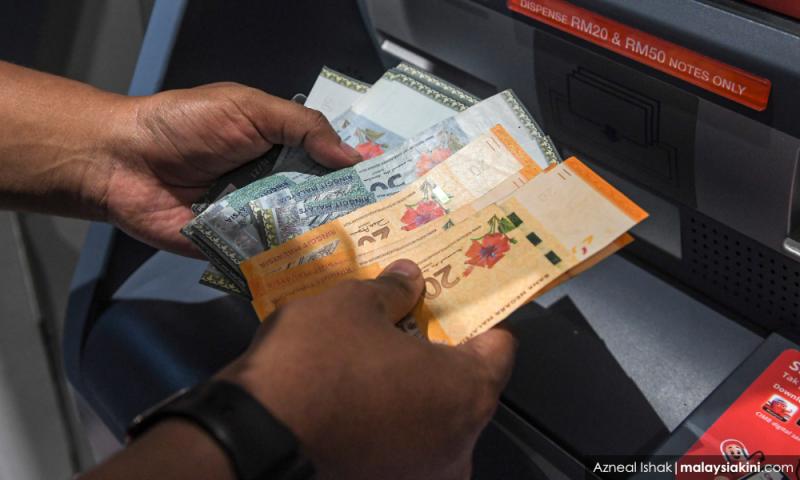LETTER | What does weak ringgit really mean to us
LETTER | The recent ringgit depreciation has raised concerns among the public. Headlines characterised the ringgit as “worst-performing”, and “in a freefall” among others.
However, the recent ringgit movement is not unique to Malaysia alone. Take for example China and Japan, which have announced that they will curb the excessive depreciation of their currencies. In Thailand, the Thai Bhat hits its seven-month low, which analysts attributed to the strong dollar.
Comparisons between the ringgit and the Singapore dollar aren’t helpful either. Structurally, our economies are quite different, while Malaysia’s trade-to-GDP ratio is quite high at around 130 percent, Singapore relies much more on trade with their trade-to-GDP ratio at around 340 percent. That’s almost three times as much as Malaysia.
Therefore, Singapore cannot afford to allow its currency to depreciate to significantly or its whole economy would be impacted. Consequently, the Monetary Authority of Singapore controls their monetary policy via exchange rates, not interest rates.
Looking at the issue from an interest rate differentials perspective, Malaysia’s Overnight Policy Rate (OPR) was at three percent pre-pandemic and it is now back to three percent as of May 2023.
The US Fed’s rate (pre-pandemic: 2.75 percent; now: 5.25 percent) and Singapore’s AOIR (pre-pandemic: ~2.8 percent; now: ~3.8 percent) have increased significantly post-pandemic.
Our interest rates used to be higher than both the US and Singapore pre-pandemic but are now much lower than theirs. Naturally, funds would flow into their economy purely because of the higher rates.
This does not mean Bank Negara should follow in their footsteps and raise the OPR at such a rapid pace. I’m sure most of us would’ve struggled if interest rates on our loans went up as fast as in the US or Singapore. Even in Singapore, there are worries about “mortgage stress” amid the rising interest rates.
Bank Negara’s monetary policy mandate is not to support the ringgit but to maintain price stability. Bank Negara is fulfilling that mandate too. After OPR was increased, the core inflation has gradually eased although it remains elevated.
Overall, the discourse surrounding the ringgit is too focused on short-term thinking rather than discussions on longer-term structural reforms that will have a much greater impact on the ringgit. We must shift the discourse away from focusing on short-term measures such as the nitty-gritty of subsidies, cash handouts, short-term ringgit movements, and OPR.
The overt focus that we are placing on these topics instead of more productive ones on structural reforms will doom us in the long run.
More critically, the discourse should focus more on how we can undertake structural reforms that can transform Malaysia into a globally competitive economy. Throughout Malaysia’s economic history, we have transitioned from a primary agriculture economy to mining around colonial Malaya and to a manufacturing-based economy in the 90s.
But our economy has somewhat stagnated since. We are still growing but not as much as our peers. In the global economic race, we will need to keep up with the pace of the other economies or we will be left behind.
There are two key issues that Malaysia needs to tackle for our long-term prosperity.
First of all, the issue of innovation. Our economy currently lacks impactful innovation but for all the wrong reasons. Malaysia has an abundance of talents, but we fail to meaningfully address the brain drain. Many of our bright minds are contributing to the development of other countries. There are simply just not enough high-paying and high-quality jobs available in our country.
Our industries have an overreliance on low-pay and manual foreign labourers, which impedes our industries from innovating. Case in point, the underemployment in Malaysia is close to one million people, that’s around five percent of Malaysia’s labour force. It should be this kind of statistics that worries us, not the short-term movements of the ringgit.
Secondly, the issue of political stability and corruption. Looking at the ringgit from a longer-term perspective, the ringgit depreciated sharply around 2015 and settled into a new long-term average (in economics terms - structural break).
Similarly, the KLCI peaked in around 2015 and has been declining ever since. Something must have happened in 2015 that made investors worried about Malaysia.
According to the World Bank Worldwide Governance Indicator, the measure for political stability and control of corruption similarly declined sharply post-2015. Thus, there needs to be a clear commitment to tackle corruption that scares away investors.
While the recent ringgit movements do not reflect how our economy is performing now, its long-term levels could be an indicator that we’re behind our peers. It is high time for us to take heed of the alarm that has been flashing since 2015 - to undertake the necessary structural reforms to not only encourage innovation and also tackle corruption.
It is critical for us to shift the discourse towards a focus on long-term measures that will help our country achieve greater economic growth. When we achieve that, the ringgit will naturally appreciate.
The views expressed here are those of the author/contributor and do not necessarily represent the views of Malaysiakini.
RM12.50 / month
- Unlimited access to award-winning journalism
- Comment and share your opinions on all our articles
- Gift interesting stories to your friends
- Tax deductable
